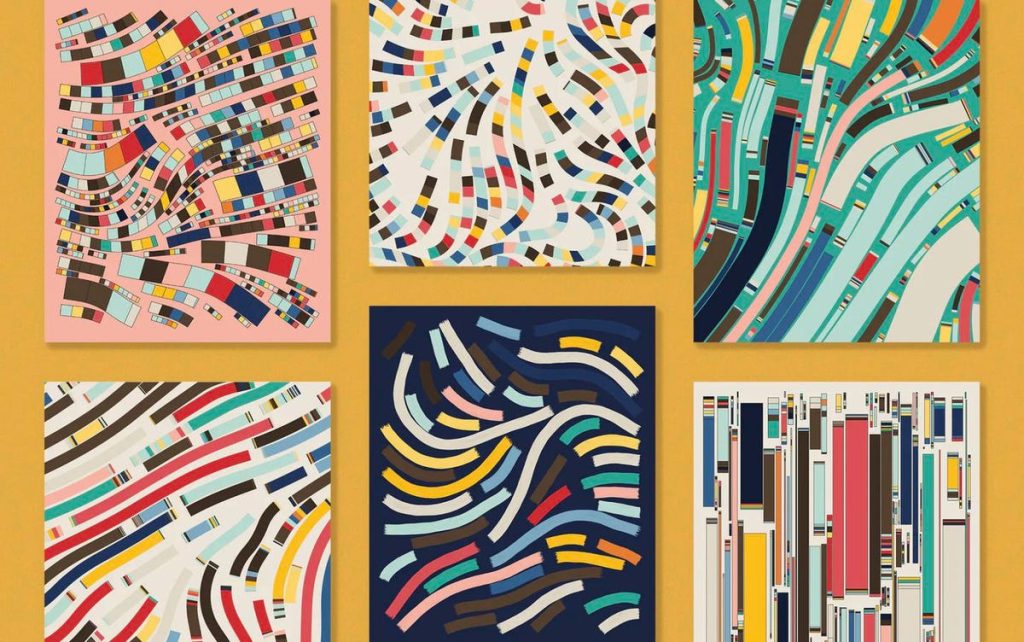Most of the buzz about NFTs these days has to do with fine art. After all, there are wins here all around: many artists are making money they never have before, and collectors and buyers can access a wide range of digital art. If you buy an NFT artwork, that original belongs to you.
Non-fungible tokens have elevated the status of digital art. But how do we know this isn’t a passing fad? Are NFTs the future of fine art collecting? Well, let’s look.
What are These Rare Tokens?
Non-fungible tokens (NFTs) are interchangeable units of data that are stored on a blockchain, a type of digital ledger. These units can be bought, sold, and traded online with some form of cryptocurrency. They permit holders to authenticate their purchases – in other words, to prove their ownership.
Think of NFTs as physical collector’s items – just in a digital form. So, in art, rather than buying a physical painting to display on your wall, you get a digital file instead (although you can buy physical works as well. We’ll discuss that later).
In addition to art, NFTs represent music, videos, and in-game items. Digital files can be anything from an image to an audio clip or GIF.
How Popular are NFTs?
While the tokens have been in existence for eight years, they’re super popular of late mostly due to the art space. Since 2017, a whopping $174 million has been doled out on NFTs.
Authenticity
As we say, NFTs give owners proof of ownership. Say you’ve produced 100 copies of the same image and mint 100 NFTs to represent ownership. Every image copy will be distinct from the other 99, based on the metadata contained in each token.
Therefore, though 100 collectors may each have the same-looking image in what are called “wallets,” each collector can rightly claim ownership of, say, copy number 34.
What is “Fungibility?”
The thing about NFTs is that they can be mutually exchanged for a like item. For instance, U.S. dollars are fungible. If I give my sister a $1 bill, and she gives me one of hers, we both have the same buying power. It’s the same with bitcoins, a popular type of cryptocurrency that’s often used to buy NFTs in the art realm and elsewhere.
NFTs and the Art Realm
With NFTs, artists can peddle their works in digital form straight to buyers all over the world without the use of a gallery or auction house, which makes such art more accessible to buyers, by the way. This permits the artists to keep much more of sales profits.
Further, royalties can be built into digital works of art, enabling the artist to get a percentage of sales profits every time the piece is sold to a new owner.
And this kind of art investment has brought transparency to the art space since the blockchain ledgers on which NFTs are stored are public. After all, the issue of transparency has been a longtime problem in the art world.
What About NFTs and Physical Art
It’s true: physical works of art can be minted as NFTs. Doing so establishes secure data about that artwork, including an ownership record, information about exhibition and care, and specifics about how much goes to the creator when the piece is resold.
So, are NFTs the future of fine art collecting? The true answer is — time will tell. What is for certain is that the tokens are shaking up the art space, both for artists and collectors.
If you’re interested in investing in art, the alternative platform Yieldstreet, which helps investors produce secondary income streams outside of stocks and bonds, offers fractional ownership in a diversified pool of artworks by mid-career and blue-chip creators – and with as little as $10,000.

“Social media evangelist. Baconaholic. Devoted reader. Twitter scholar. Avid coffee trailblazer.”








More Stories
Nicolas Loufrani: Young Londoners Design Afro Hair Emojis
US Election: Trump Vs. Harris – 2024 poll numbers in America
Börse Express – USA: Retail sales rise unexpectedly